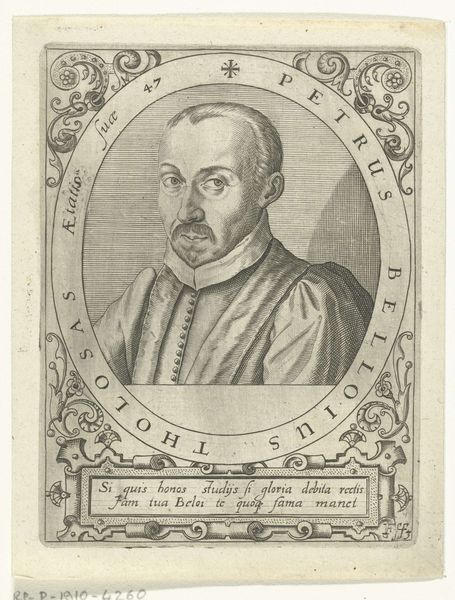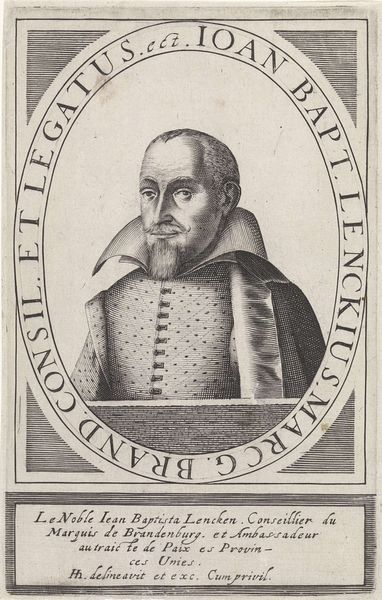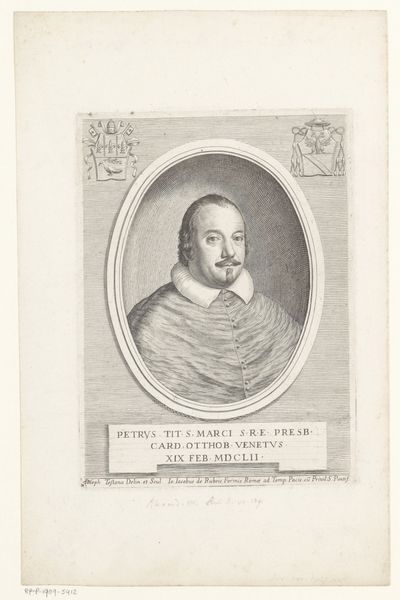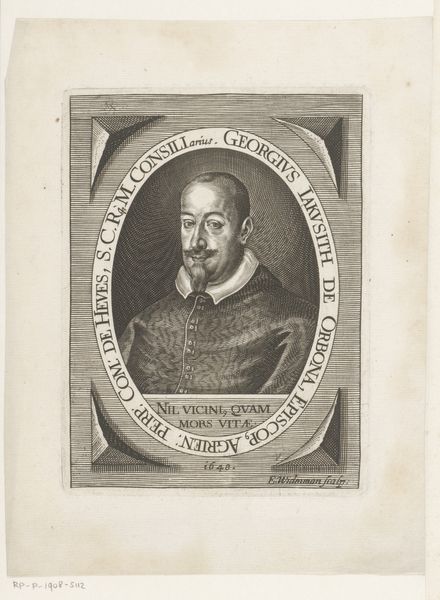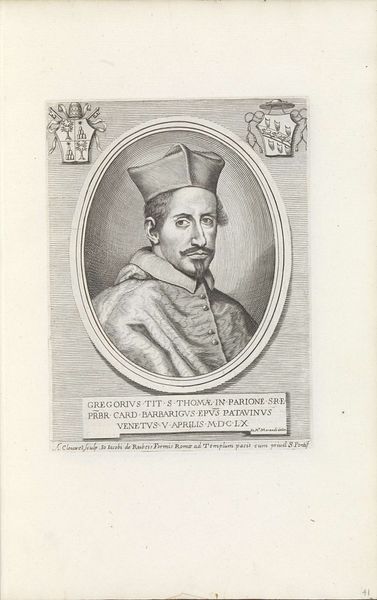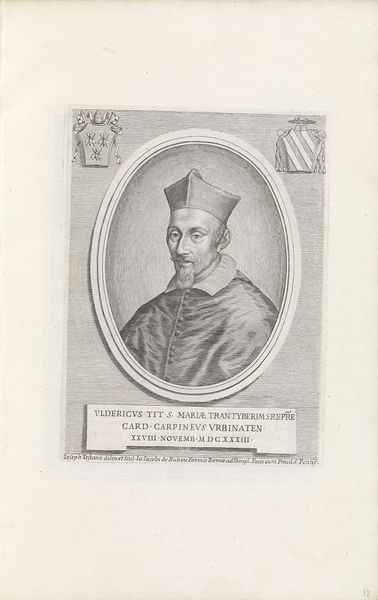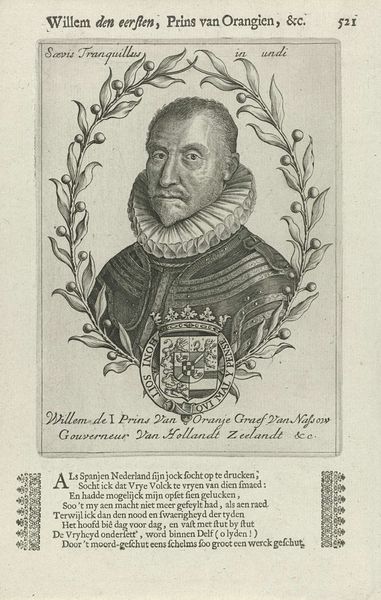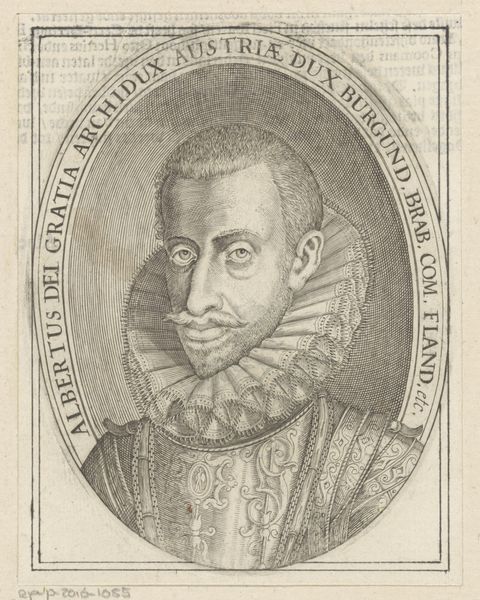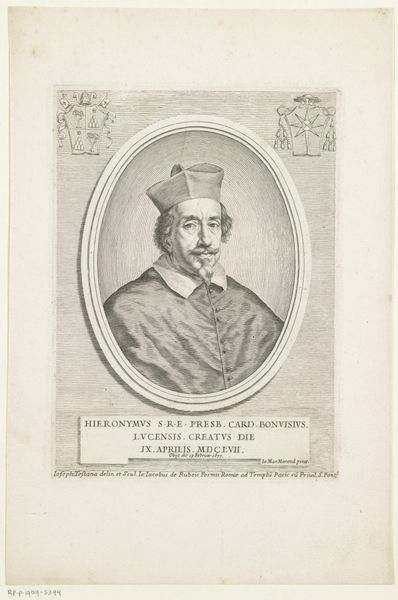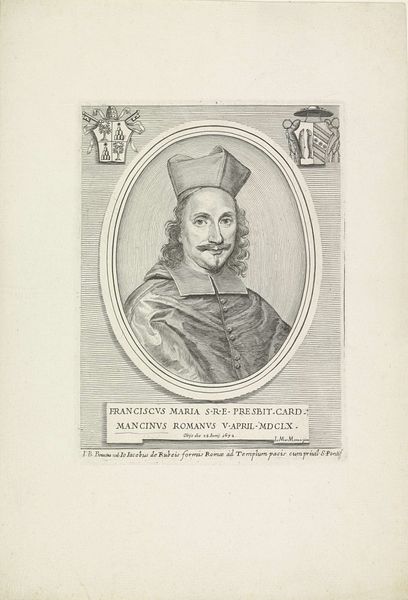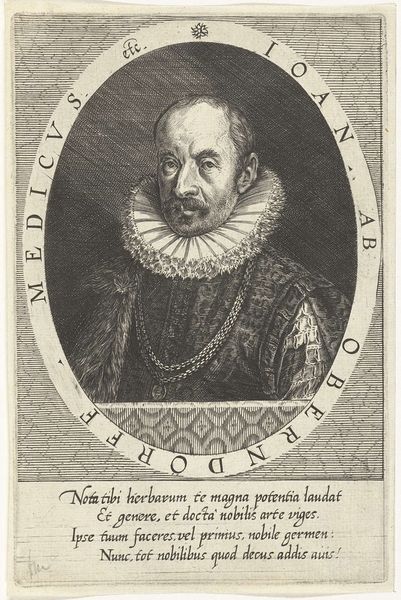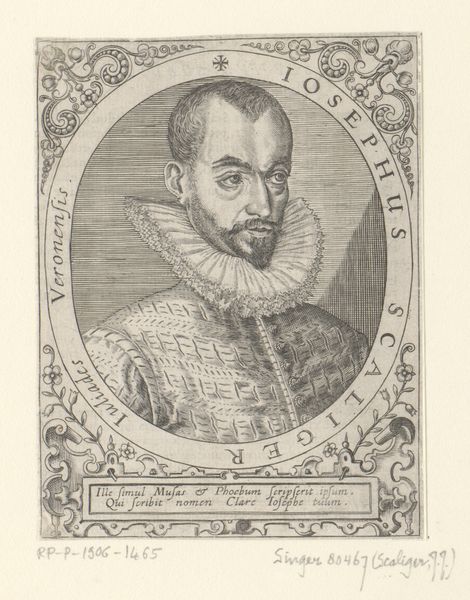
engraving
#
portrait
#
baroque
#
old engraving style
#
pencil drawing
#
history-painting
#
engraving
Dimensions: height 194 mm, width 145 mm
Copyright: Rijks Museum: Open Domain
Curator: This engraving, crafted sometime in the 1660s or 70s, offers a glimpse into the life of Cardinal Pascual de Aragón. What’s your initial reaction? Editor: The somber tones create an interesting contemplative mood, wouldn't you agree? The fine lines of the engraving, quite detailed, yet restrained…I’m curious about the materials used. What can you tell me about the artist and printmaking process? Curator: Albertus Clouwet, a name often associated with reproductive prints during this period, is credited with this piece. The engraving itself involves meticulously etching lines into a metal plate, inking it, and then transferring the image onto paper under immense pressure. Consider the labour involved! The act of replicating imagery, making it accessible, certainly democratized art to a certain extent. Editor: Absolutely. And think about the Cardinal's motivations, commissioning or consenting to such a portrait. The emblems above him tell a story of power, lineage, and the social structures that elevated him. His image is circulated, further cementing his position. Were these prints widely distributed, used for specific purposes? Curator: Most likely yes. Prints like these were often disseminated as visual propaganda or as commemorations, functioning almost like early forms of mass media. Consider too that such images became part of a visual language reinforcing the authority and influence of the church. Editor: Looking closer at his garb, I can only begin to imagine the textile trades involved in producing such a garment, the layers of social and economic interactions implied in just this one visual detail. What was the social context surrounding Aragón at that moment? Curator: Aragón was a key figure during a time of shifting power dynamics within the Spanish Church and monarchy. His influence extended into political and religious realms, making this portrait an artifact of broader historical trends. This image reflects his status and aims to project gravitas. Editor: I find it compelling how an object seemingly simple holds a universe of interconnected social and material histories. Thanks for unpacking this with me. Curator: Indeed, by focusing on the historical contexts and production of such works, we gain greater insight into the very mechanics of image-making and the world they both shaped and reflected.
Comments
No comments
Be the first to comment and join the conversation on the ultimate creative platform.
